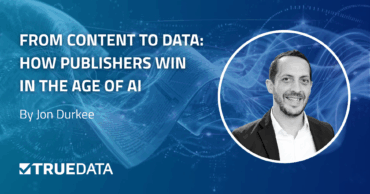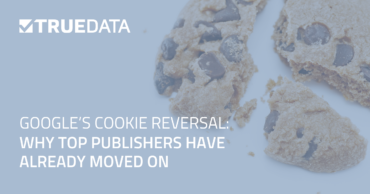Reports of the publisher’s death have been greatly exaggerated. For years, the media industry has been framed as a casualty of platform dominance, programmatic advertising, and the demise of third-party cookies. But a more interesting—if underappreciated—story is unfolding: publishers are not just content creators; they are, in fact, data companies. And in the age of artificial intelligence, that positioning could prove existentially valuable.
Artificial intelligence is rapidly mediating human interaction with information. Agents, chatbots, and recommendation systems increasingly determine what people read, watch, or buy. What this means is that loyalty is no longer automatic. If an AI chatbot is deciding what content a user sees, the only way a publisher builds resilience is by motivating people to come to their site directly. That credibility and recognition is the entry point.
Publishers, long dismissed as relics of an earlier era, still possess an asset that platforms and synthetic content struggle to replicate: the ability to earn direct engagement. When trust motivates a logged-in visit, a subscription, or a direct relationship, it unlocks the data the publisher needs most: first-party identity. Trust is the mechanism that generates identifiable signals and behavior profiles over time. And in the AI economy, those signals can be monetized in ways far more sophisticated than banner ads.
Consider licensing: model developers require vast quantities of high-quality, rights-cleared text, video, and audio to train systems. Publishers’ archives, already curated and vetted, can become training fuel—commanding premiums precisely because of their integrity. But more strategically, authentic user interactions and their ensuing privacy-safe profiles built on trust create enduring and differentiated value across advertising, partnerships, and AI ecosystems.
The industry’s reflexive pessimism extends to identity. The loss of cookies and mobile IDs is routinely cast as the death knell for addressability. But the claim is misleading. There are not fewer signals in the ecosystem—there are more. First-party behavioral data, contextual information, subscription records, and engagement signals multiply the fragmentation.
The real shift is that these signals are less standardized, noisier, and distributed across walled gardens. Yet this is precisely where AI thrives. Probabilistic and deterministic techniques can be combined at scale, with models continuously evaluating which signals matter most in which contexts—something no human marketer could hope to optimize manually. Far from being left behind, publishers with direct audience relationships gain ground: they own the identity signals others do not.
The notion of publishers as data companies may feel foreign, even uncomfortable. But make no mistake: the future publisher will look less like a content shop chasing CPMs and more like an intelligence company, owning identity, context, and historical content that others must rent. Their value will come not only from what they publish, but from the audience, signals, and training data they control—and the strategic leverage that control provides.
The funeral dirges are premature. Publishers are not dead. They are standing on unmonetized vaults of value. The real opportunity lies in connecting content, identity, and trust into a unified data strategy that unlocks durable, scalable growth.


Subscribe For Updates